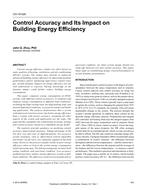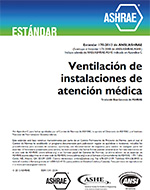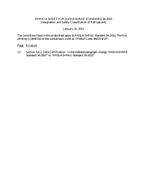Description
Current energy-efficiency studies are often based on static analysis of heating, ventilation, and air conditioning (HVAC) systems. The studies have directly or indirectly advanced building energy efficiency by improving machine performance and/or optimizing supervisory control strategy. System-dynamic impacts on energy efficiency are not well understood or exposed. Having knowledge of the dynamic impact could further reduce building energy consumption. This paper compares energy consumption of HVAC systems with different control accuracies. It examines and analyzes energy consumption at different load conditions, including the high cooling load, the high heating load, and neutral/light load conditions, in a typical commercial building application.
The analysis demonstrates that a system with improved control accuracy has better energy efficiency than a system with poorer accuracy, assuming all other aspects of the system and application are the same. The paper further quantifies the relationship of energy savings and control accuracy based on a simplified energy model. The analysis provides guidance on justifying control accuracy improvement measures. Taking advantage of the low first cost and ease of implementation, low-accuracy system strategies, such as offset-based control algorithm and binary on-off valve, are commonly applied in the field today. However, the practice usually results in poor energy efficiency when we look at the system energy consumption in full operating map. The full operating map includes both rating condition and part-load condition. Low-accuracy methods may have similar energy-efficiency results at fullload conditions. The efficiency could worsen dynamically at part-load condition. An ideal system design should test trade-offs between cost and control accuracy. This paper sheds light on establishing design criteria/benchmarks in system dynamic performance.
Citation: ASHRAE Transactions – Volume 121, Part 1, Chicago, IL
Product Details
- Published:
- 2015
- Number of Pages:
- 10
- File Size:
- 1 file , 3.7 MB
- Product Code(s):
- D-CH-15-029




